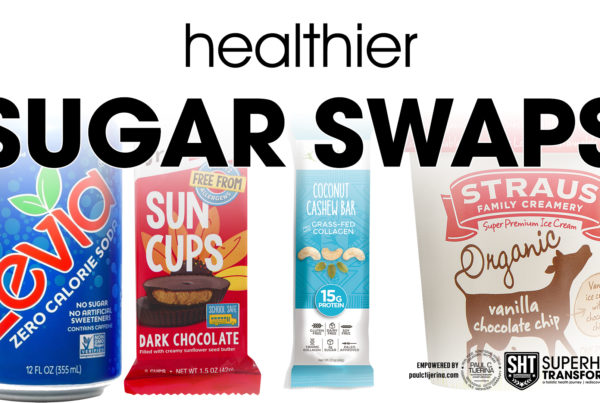how to do low-carb!
please remember to download our “how to low-carb” tips below this post.
low-carb is a big thing now, I would say it’s almost like a fad. in many ways it’s great because so many of us are realizing that carbs are a problem. and in some ways we must be careful, because we believe that within the real food realm, carbs are an important source of many beneficial nutrients.
understand, in general, we’re not low-carb. true low-carb would be less than 100g of net carbs in a day, probably moving closer to less than 50g of net carbs per day. we’re not about being low-carb per se, we’re lower-carbish compared to S.A.D. for sure. instead, we’re all about the right carbs, from the right sources, at the right time of day! we do see low-carb as a useful tool, but not as a long-term strategy.
what exactly do we mean by carbs?
in our world, we’re talking about predominant sources of glucose, starch, and sugar from #safestarches, fruits, sweet things. although almost all foods contain some glucose, we’re specifically talking about these sources that are relatively higher in glucose / starch / sugar.
why we need carbs. . .
we need carbs in the diet because:
- we need carbs for sanity purposes – I don’t know many people that can sustain low-carb for long periods of time or indefinitely.
- glucose plays supportive, adjunct roles inside the body for all kinds of structure, form, and function.
- we need periods of carbs, and then periods without because this is what we call hormetic – everything that is beneficial is beneficial in spurts.
we recommend cyclic low-carb. use it as a tool. but not something to do long-term.
remember purpose of low-carb and why we do it:
- shock the body into self-sufficiency. by pulling out main sources of glucose, starch, and sugar, we are forcing the body to figure out how to create energy on its own.
- prove that we can do it = freedom. we must know that no matter what the situation, we can handle it.
- experiment to see what really works. some of us will find we do really well low-carb, some won’t. and the wisdom is to understand – what works or doesn’t work now, will change.
“most people, after a brief transitional adaptation period, feel leaner, tighter, with better energy, and better most things from going low-carb.”
for our low-carb approach, we recommend the following:
in the context of eating 100% real food, and being fully adapted to our way of eating.
- start by eliminating carbs first part of the day. save carbs till later to get a low-carb training effect.
- next, pull back on the total amount of carbs you’re consuming later in the day by half.
- finally go thru at least 2 weeks of strict low-carb, pulling out all #safestarches, fruits, sweets, and alcohol.
- if you need it, you can have 1 cheat night a weekend where you have #safestarches, fruits, and/or alcohol.
we don’t count carbs, net carbs, or portion control. we just have these basic guidelines. JUST DOING THIS, most people are going to see great results.
FAQ’s:
- full-fat dairy, nuts, seeds, and legumes are still in the deal.
- squashes zucchinis carrots beets, etc? the rule for the cleanse is no #safestarches, sugars, fruits, alcohol, etc. zucchinis, yellow squashes, carrots and beets are fine. other squashes although technically in the deal, should be minimized because of their relatively high starch content. if you really want to get the benefit of low-carb, I’d refrain from most squashes :)
- stevia is fine. it is a no calorie, natural sweetener. pay attention to how you feel. it may induce cravings. it may make your body expect sweet. try this stevia product.
- things like unsweetened cocoa powder are fine.
- always be prepared. always always always have something available during your transition. if you feel shaky, “low blood sugar,” or anything similar, reach for something protein and/or fat-based. ideal go-to’s will be hard boiled eggs, bacon, and CHEESE. cheese is the perfect snack = fat + protein.
- low energy, headaches, nausea, cravings are very common. realize you’re furthering the training of #selfsufficiency. you can expect a similar transition process to your introduction to real food. after the first 2-3 days, you should feel more energy, and more tight and clean. download our low-carb tips handout for more information.
- essential oils for tension. tension blend, peppermint, rosemary, soothing blend, and cardamom, in order of priority. you may diffuse at the onset of a head or neck tension, or massage on your neck, temples, and forehead.














